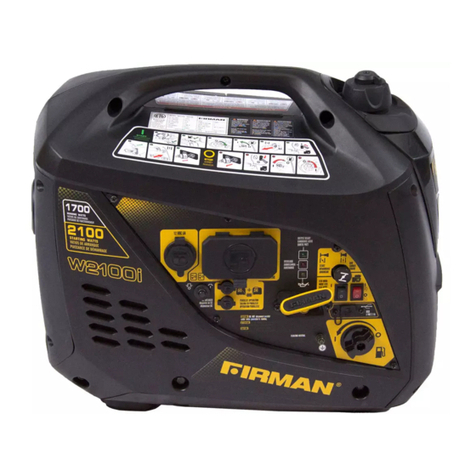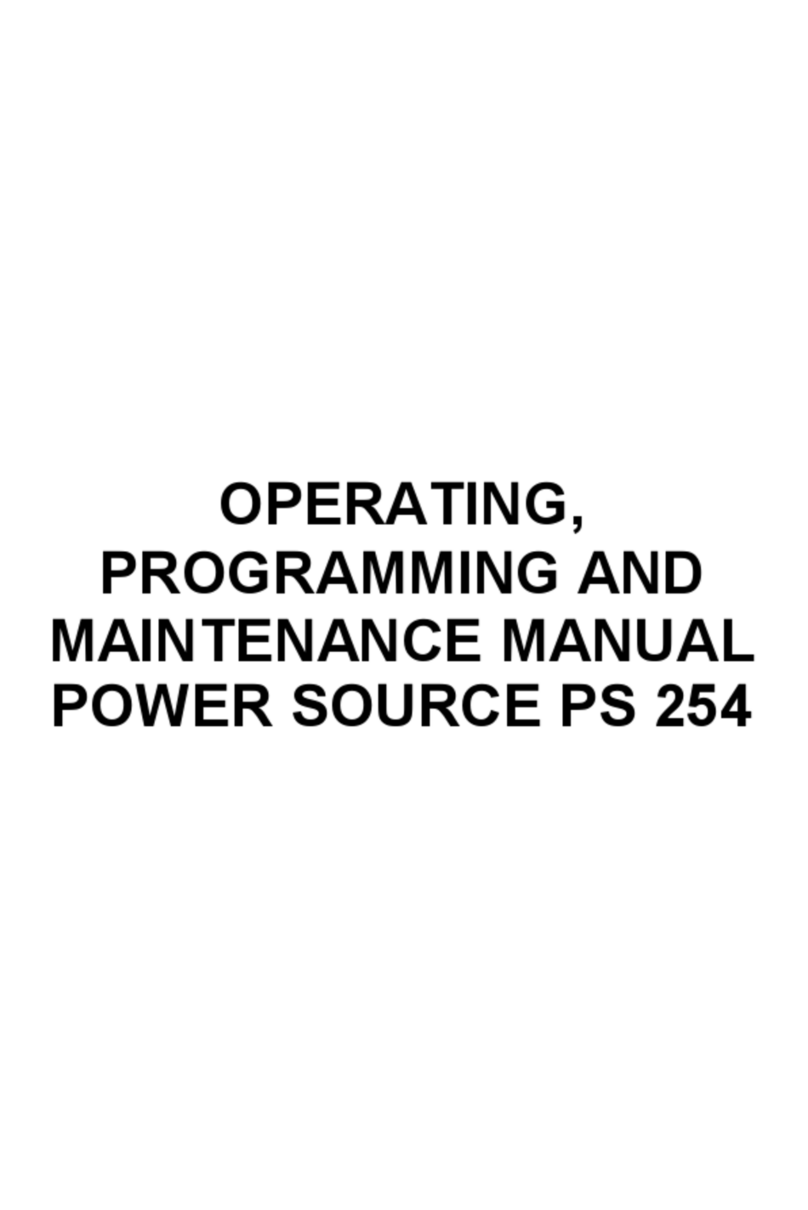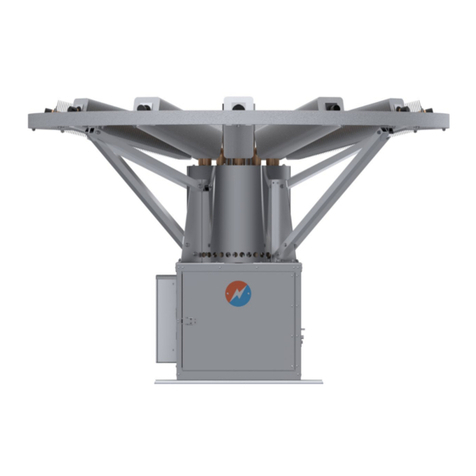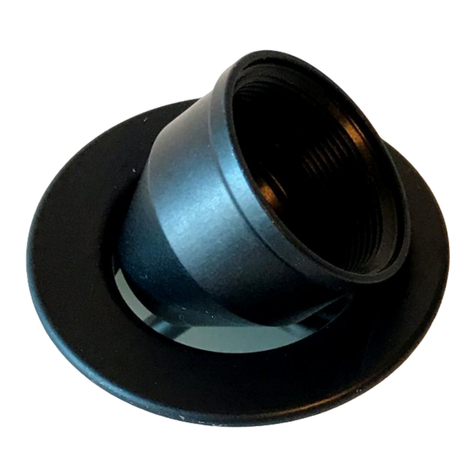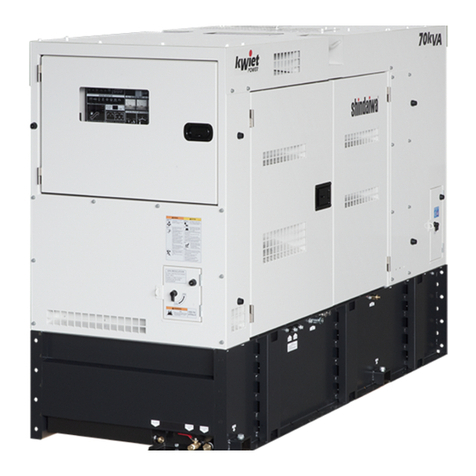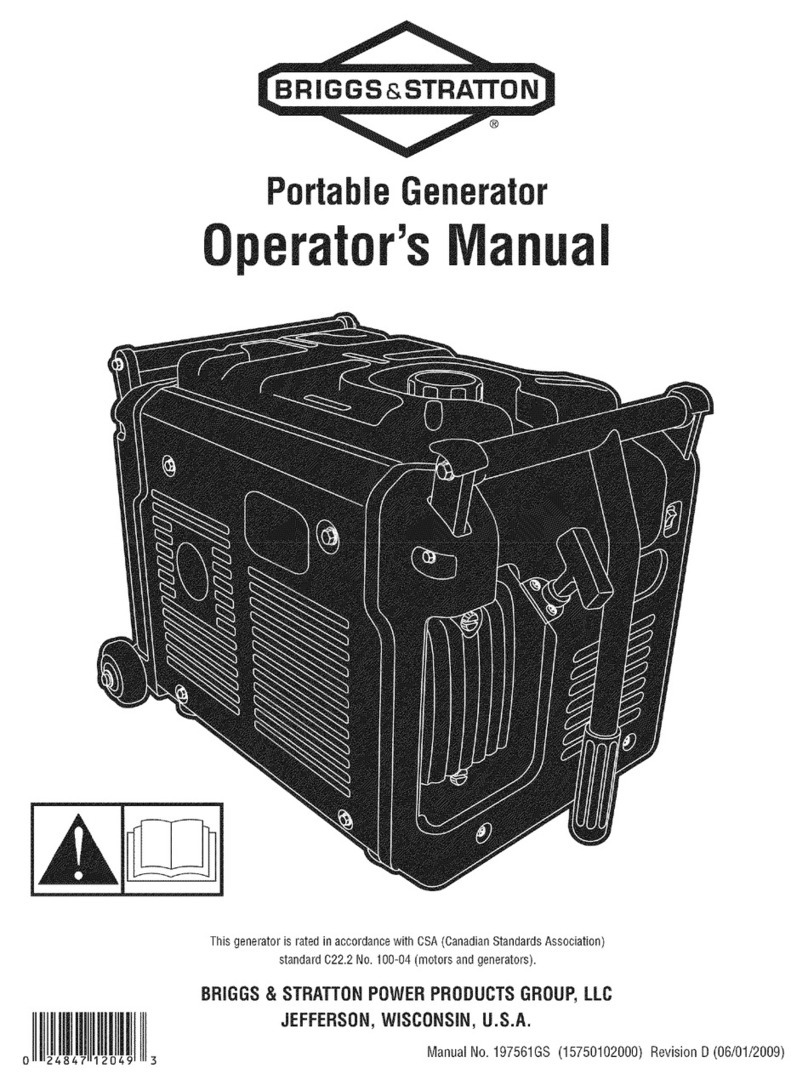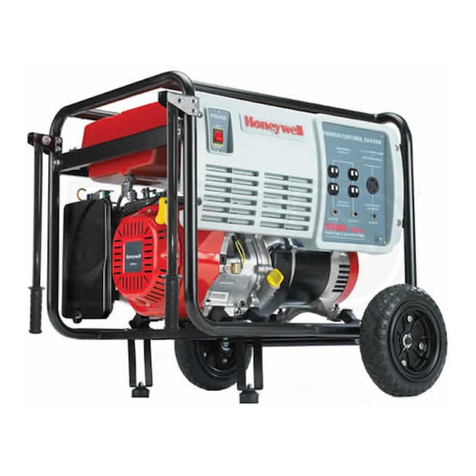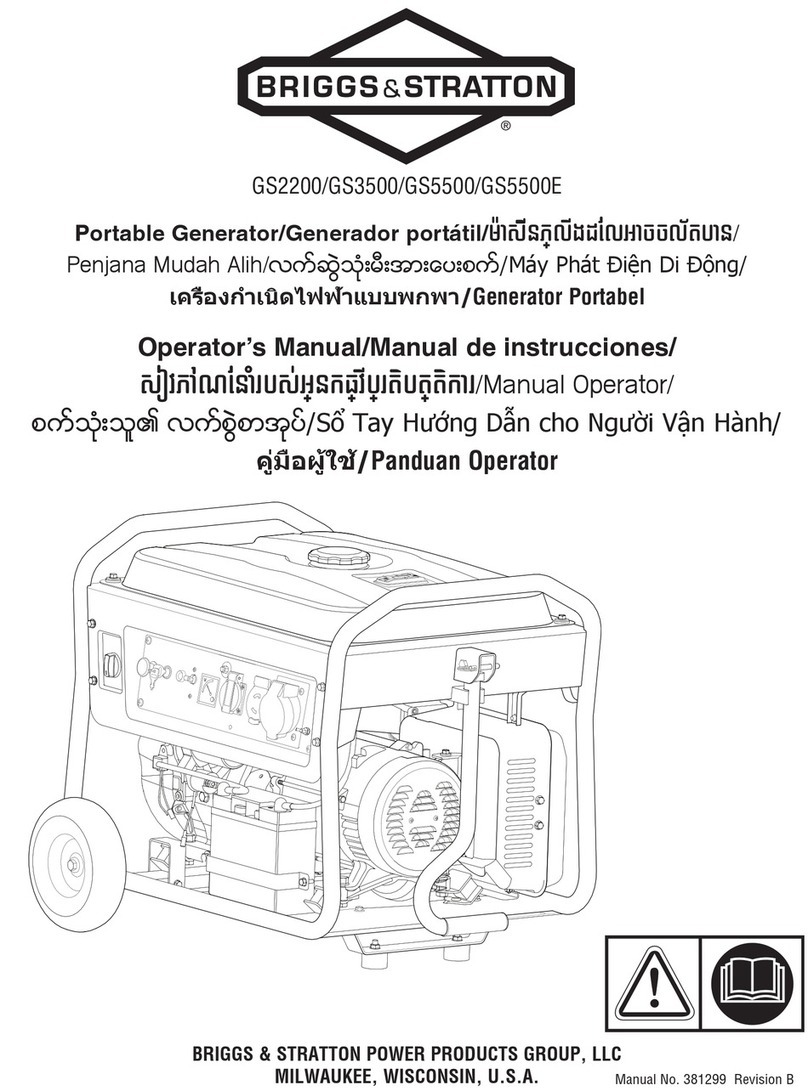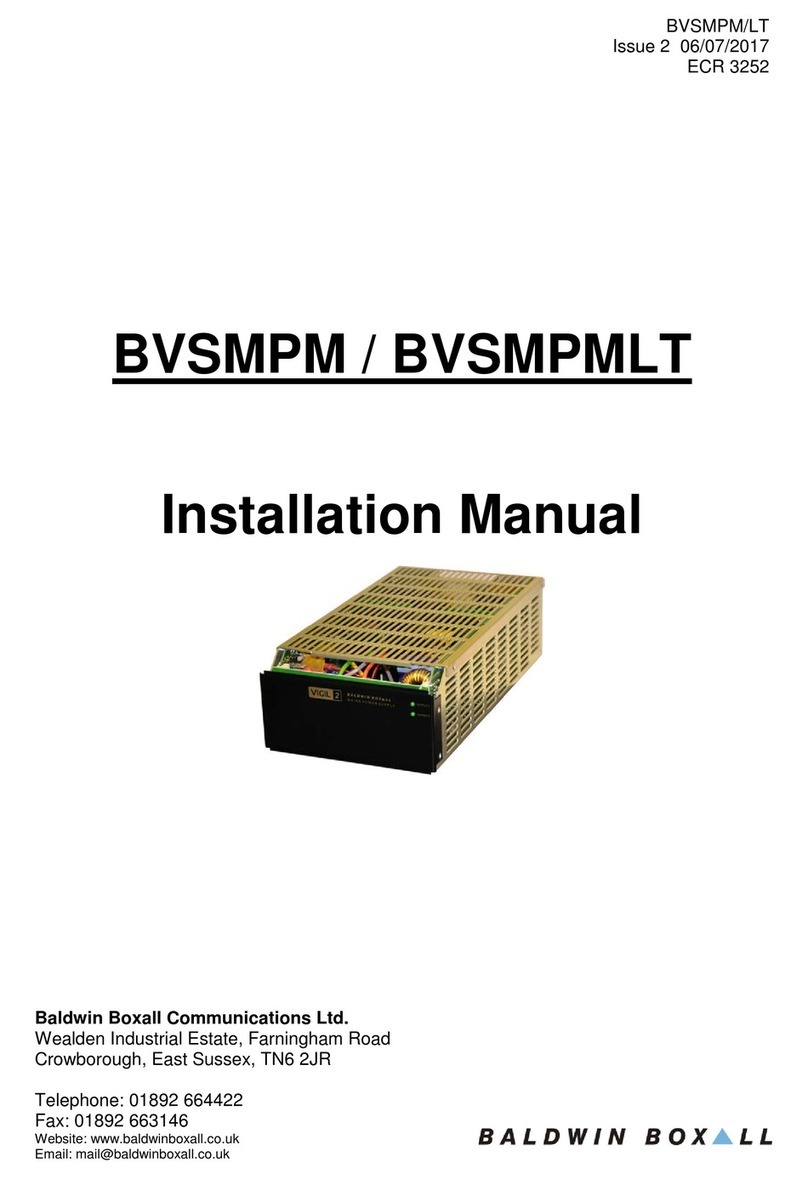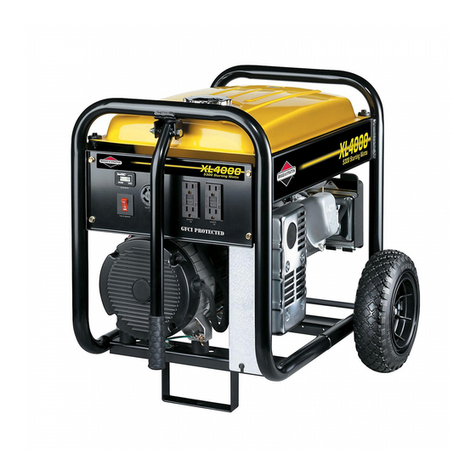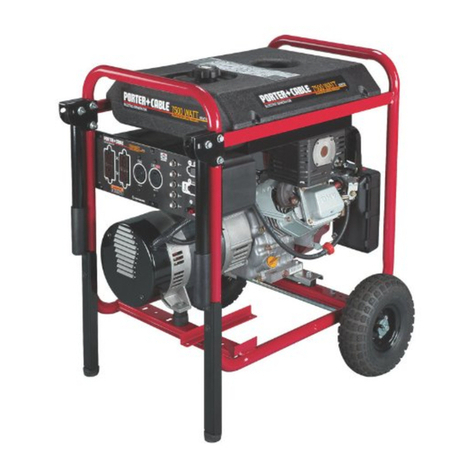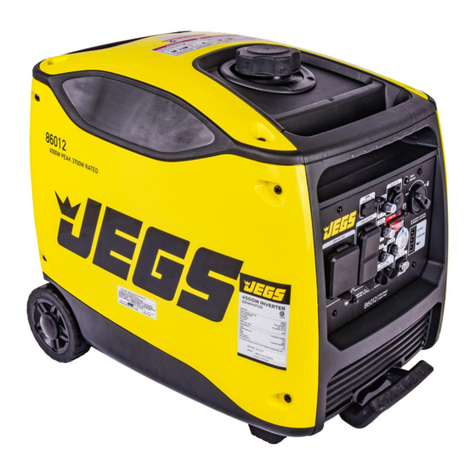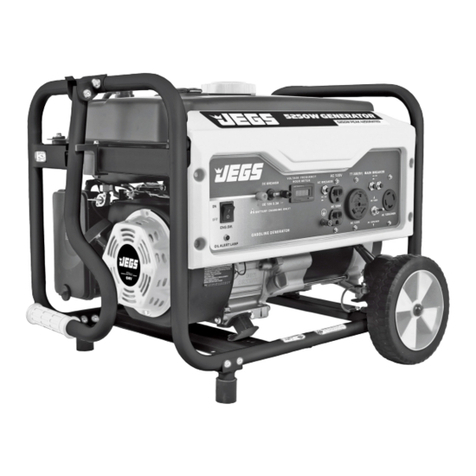
Safety Rules Cont.
Keep away from flammable objects
and other hazardous materials.
• The fuel and its vapors used to power this unit
are highly flammable and could explode resulting
in serious injury or death.
• Never fill or drain fuel tank indoors.
•
Never overfill fuel tank. If fuel spills, move the
unit at least 30 feet away from the spill and wipe
up any remaining fuel on the unit before starting
the engine.
• Never smoke while operating or fueling this unit.
•
Never operate or store this unit near an open
flame, heat, or any other ignition source.
• Generator should be far away from buildings or
other equipment during operation.
• Keep engine free of grass, leaves, grease, and
other flammable debris.
•
When adding or draining fuel, unit should be
turned off for at least 2 minutes to cool before
removing fuel cap. If unit has been running, the
fuel cap may be under pressure, remove slowly.
•
To keep fuel from spilling, secure unit so it cannot
tip while operating or transporting.
•
When transporting unit, disconnect the spark plug
wire and make sure the fuel tank is empty with
the fuel shutoff valve turned to the off position.
Pull cord recoils rapidly and can pull arm
towards engine faster than you can let go
which could result in injury.
•
To avoid recoil, pull starter cord slowly until
resistance is felt, then pull rapidly.
Avoid touching hot areas of this unit.
• Only operate the generator on a level surface.
• If connected to a structure, connect the ground
terminal to an appropriate ground.
This generator produces high voltage
which may result in burns/electrocution
causing serious injury or death.
•
Never handle the generator, electrical devices, or
any cord while standing in water, while barefoot,
or when hands or feet are wet.
•
Always keep the generator dry. Never operate
generator in rain or under wet conditions.
• Use a ground fault circuit interrupter (GFCI) in a
damp or highly conductive area, such as metal
decking or steel work.
•
Never plug electrical devices into generator hav-
ing frayed, worn, or bare wires. Never touch bare
wires or contact receptacles.
•
Never permit a child or unqualified person to
operate generator. Always keep children a
minimum of 10 feet away from the generator.
• If using the generator for backup power, notify
the utility company.
•
If connecting generator to a building’s
electrical system for standby power, you must use
a qualified electrician to install a transfer switch.
Failure to isolate the generator from the power
utility could result in serious injury or death to
electric utility workers.
Never modify this unit in any way or
modify governed engine speed.
•
Increasing the governed engine speed is
dangerous and can result in personal injury and/
or damaged equipment.
•
Decreasing the governed engine speed adds an
excessive load and can damage the equipment.
•
This generator will supply the correct rated
frequency and voltage only when operating at
the preset governed speed.
5





















